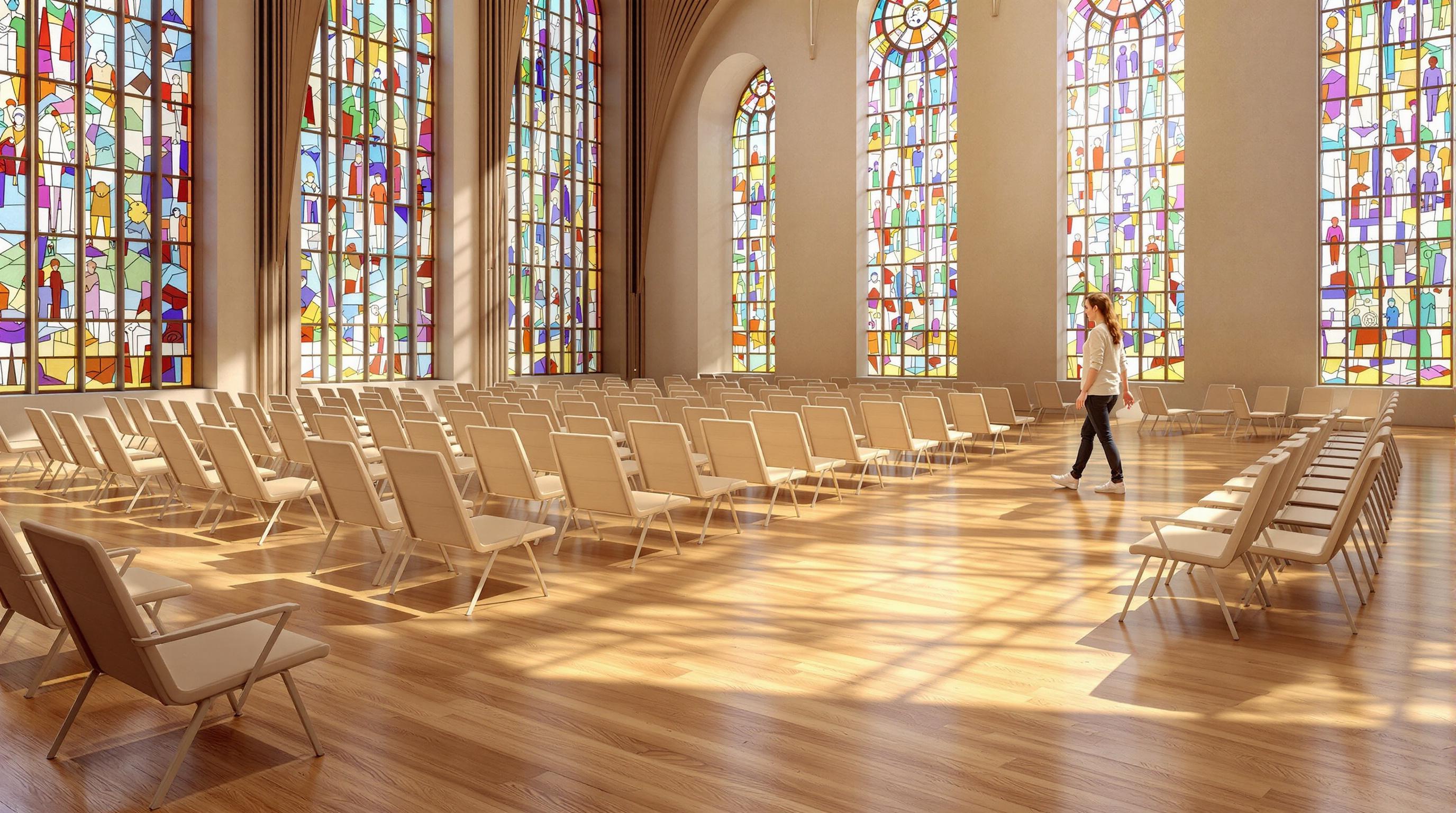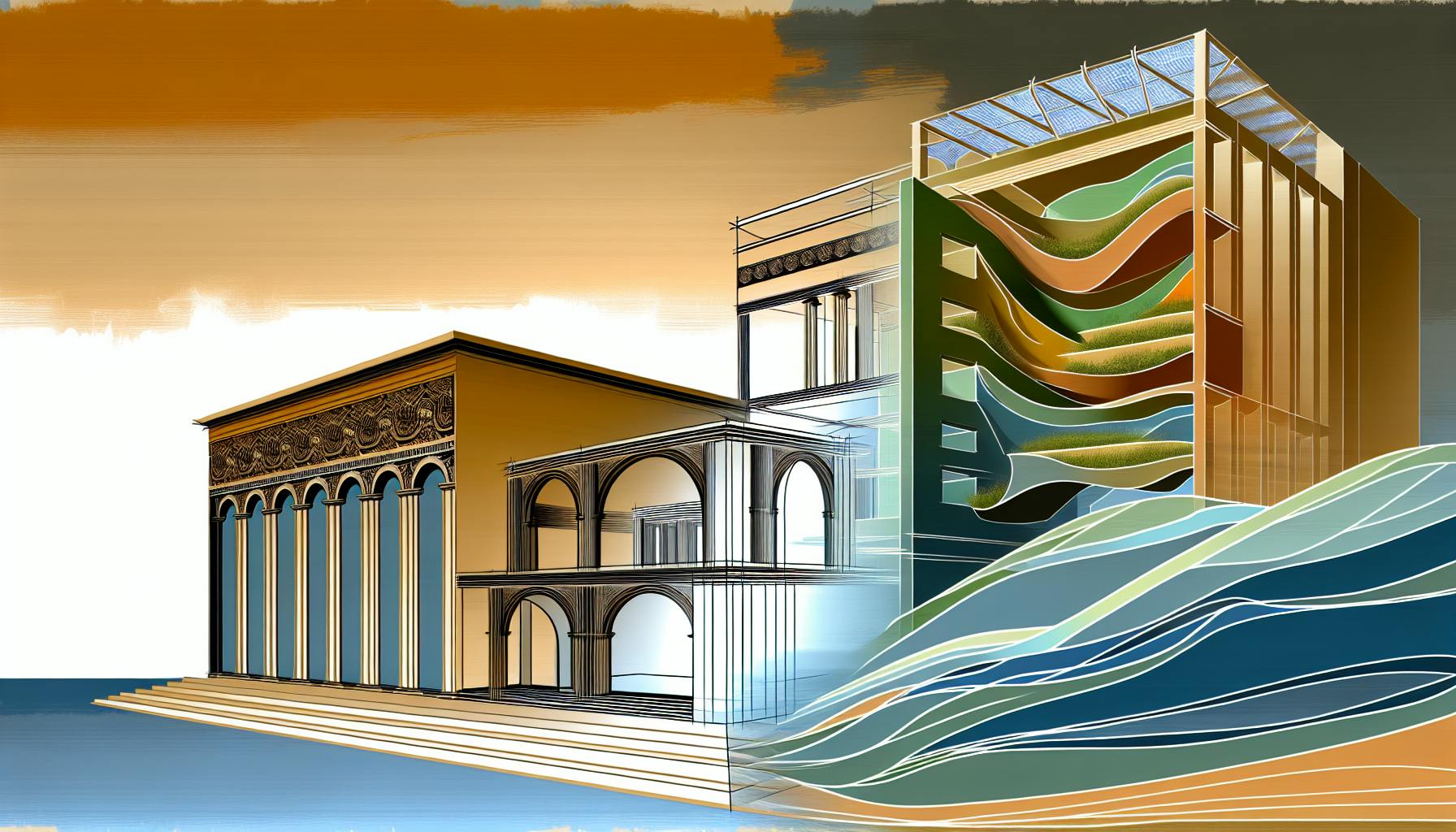Exploring different building styles in architecture offers a fascinating glimpse into our history, culture, and the technological advancements over time. From the orderly beauty of Classical architecture with its emphasis on symmetry and mathematical precision to the awe-inspiring heights and intricate designs of Gothic architecture; from the harmonious balance of Renaissance architecture reflecting humanist ideals to the grandeur and drama of the Baroque, and finally, the simplicity and functionality of Modern architecture. This guide also ventures beyond the West to highlight distinctive styles from Asia, Africa, and Oceania, each telling its own story through materials, design, and purpose. Whether you're drawn to the cozy Cape Cod homes, the nature-blended Craftsman style, the lush Mediterranean settings, or the sleek Contemporary designs, understanding architectural styles enriches your appreciation of the buildings that surround us and the homes we live in. Dive into this beginner's guide to discover the essence and evolution of architectural styles across the globe.
- Classical Architecture: Symmetry, columns, and mathematical precision.
- Gothic Architecture: Tall towers, flying buttresses, and stained glass.
- Renaissance Architecture: Human-scale balance, orderly arrangements.
- Baroque Architecture: Grandeur, drama, and sweeping shapes.
- Modern Architecture: Simplicity, geometric forms, and new materials.
- Regional Styles: Unique designs from Asia, Africa, the Americas, and Oceania.
Explore homes from the Craftsman, Cape Cod, Mediterranean, and Contemporary styles to find what resonates with your personal taste and lifestyle. Each style offers a different approach to living spaces, from the simple and sturdy to the opulent and ornate. Start your journey into the world of architecture with this guide, and uncover the stories buildings tell through their design.
Classical Architecture
Classical architecture started in ancient Greece and Rome. It focuses on clear rules, balance, and using math to make buildings look perfect. Key features include:
- Buildings that are the same on both sides
- Columns, triangle-shaped fronts, arches, and round domes
- Lots of detailed decorations and statues
- Using math to decide how big or small parts of the building should be
Some well-known examples are the Parthenon, the Pantheon, and the Colosseum. Greek thinkers came up with the idea that buildings should show mathematical beauty, which has influenced Western building styles for a long time.
Gothic Architecture
Gothic architecture started in France in the 12th century. It's known for:
- Very tall towers, supports that look like they're flying, and ribbed ceilings
- Busy front parts and colorful glass windows
- Pointy arches and detailed stone work
Gothic churches like Notre Dame and Chartres were built to reach up high and let in a lot of light, making the inside feel grand and spiritual. This style shows how medieval Christianity aimed to connect with heaven.
Renaissance Architecture
Renaissance architecture began in 15th century Florence. It brought back the ideas of ancient Greece and Rome, focusing on:
- Balance and a human-sized scale
- Neat and orderly fronts and layouts
- Round arches, domes, and columns
Architects like Brunelleschi created buildings like the Florence Cathedral and St. Peter's Basilica that mixed old classical ideas with new ones. This style reflects the time's focus on humanist ideas.
Baroque Architecture
Baroque architecture came about in the 17th century. It's all about:
- Big, sweeping shapes
- Lots of decorations
- Not always sticking to symmetry and adding dramatic touches
Places like the Palace of Versailles show off the Baroque style, which was meant to wow people with its grandeur and drama. It fit the lavish tastes of the time's rulers.
Modern Architecture
Modern architecture started in the early 1900s. It's based on the idea that buildings should be simple and useful, with features like:
- No extra decorations
- Simple geometric shapes
- Using modern materials like glass, steel, and concrete
Architects like Le Corbusier and Mies van der Rohe led the way with the International Style, which focused on making buildings simple and efficient, moving away from copying old styles to trying out new ideas.
Notable Architectural Styles by Region
Western Architecture
Western architecture includes famous building styles from Europe and the Americas. Some important ones are:
-
Victorian: This style started in England during the 19th century. Buildings are fancy with lots of decorations, pointy roofs, towers, and detailed woodwork. It's used for different kinds of buildings like homes, shops, and public places.
-
Second Empire: Began in France in the 1800s, known for its special roofs with windows sticking out and lots of fancy outside details. You'll see this in big buildings, apartments, and houses in the city.
-
Prairie: An American style from the 20th century, made famous by Frank Lloyd Wright. It focuses on buildings that spread out, have open inside plans, and blend in with the nature around them. Common in houses and small commercial buildings.
-
Mission: Comes from Spanish colonial style in the Americas, with plastered walls, red tile roofs, archways, and yards inside. Used for churches, schools, and public buildings in the Southwest U.S.
Asian Architecture
Asian architecture has many different styles, depending on the country and culture. Some key styles are:
-
Chinese pagoda: Tall towers with layers of roofs, made from wood or brick. Mainly for religious buildings like temples.
-
Japanese zen temple: Usually wooden buildings with simple roofs that stick out, made for calm and simplicity with gardens and natural light inside.
-
Indian stupa: Big dome-shaped structures made of brick or stone that hold important religious items. They have gates and paths around them for walking.
-
Islamic mosque: Large buildings with tall towers, big yards, and lots of detailed designs. They're places where people come to pray together.
African Architecture
African architecture includes different styles that use local materials. Some examples are:
-
Ancient Egyptian: Big stone buildings like temples and pyramids, made to last forever with lots of columns and carvings.
-
Sub-Saharan: Round houses with roofs that come to a point, made from earth and thatch. They're built to stay cool in hot weather and use materials that are easy to find.
-
Moroccan riad: Houses built around a garden in the middle, with detailed tile work and carvings.
-
Ethiopian rock-hewn: Churches and homes cut directly out of rock cliffs, with fancy outside looks and painted walls inside.
Oceanic Architecture
In the South Pacific islands and among Australia's Aboriginal people, buildings work with the environment using local designs:
-
South Pacific fale or bure: Simple huts with roofs but no walls to let the breeze in, made from grass and wood.
-
Australian Aboriginal humpy: Temporary homes made from tree branches and covered with bark or leaves. They're easy to put up and take down.
-
Maori meeting house: Big houses for the whole community, with sloped roofs and a porch in front. They're decorated with carvings and stand for an important ancestor of the tribe.
sbb-itb-1be9014
Architectural Styles in the Home
When picking a home, its design style is a big deal because it affects how comfortable it is to live in, how it works for your needs, and its overall look. Let's look at some popular styles for houses.
Craftsman
The Craftsman style started in the late 1800s in the U.S. as a response to houses that all looked the same and were built without care. These homes focus on being simple but well-made, and fitting in with nature. They usually have:
- Roofs that don't slope much
- Beams and rafters you can see
- Big, sturdy columns
- Outside walls made of stone or brick
- Roofs that stick out far
- Lots of windows for sunlight
Craftsman homes are nice because they're open, bright, and use good materials, making them last a long time.
Cape Cod
Cape Cod homes come from New England and are all about being cozy, easy to take care of, and not too expensive. They often feature:
- Roofs that slope steeply
- Not much roof sticking out
- Wooden outside walls
- Windows with lots of small panes
- A big fireplace in the middle
- A simple box shape
These homes are great for saving space and money, which is why many first-time buyers like them.
Mediterranean
Mediterranean homes mix styles from Italy, Spain, and Greece, offering a warm, traditional feel. Key features include:
- Roofs made of clay tiles
- Archways
- Open courtyards
- Walls covered in stucco
- Decorative iron details
These homes are built around a courtyard for private outdoor space, making them perfect for hanging out or having people over. They work well in warm places but can be found all over.
Contemporary
Contemporary homes are all about new, modern looks using materials like glass, steel, and concrete. They're known for:
- Simple shapes
- Big windows
- Open spaces inside
- Not much decoration
- Blending indoor and outdoor areas
Contemporary homes are bright and open, offering a modern space that can change as your needs do. They're all about using new ideas and not sticking to old styles.
Resources for Further Learning
Here are some good places to learn more about different styles of buildings:
Online Databases
- ArchitectureStyle.com - A big collection of pictures showing many types of building styles.
- Great Buildings Collection - Find photos, designs, and info about famous buildings from all over.
Architecture Blogs
- ArchDaily - A well-known site that talks about the newest projects, news, and ideas in architecture.
- Dezeen - A top magazine for architecture and design with news on the latest trends.
Virtual Tours
- YouVisit - Take a 360-degree virtual reality tour of famous buildings.
- ArchiVR - Use AR and VR to see architecture sights come to life.
Guided Walking Tours
- Architecture Tours from Viator - Find tours in different cities that focus on local building styles.
- Open House Worldwide - A yearly event that lets you go into buildings in cities all over the world for free.
Learning about different building styles in architecture takes time. Use this list as a starting point to find new places to learn about various styles, times, and design ideas.


